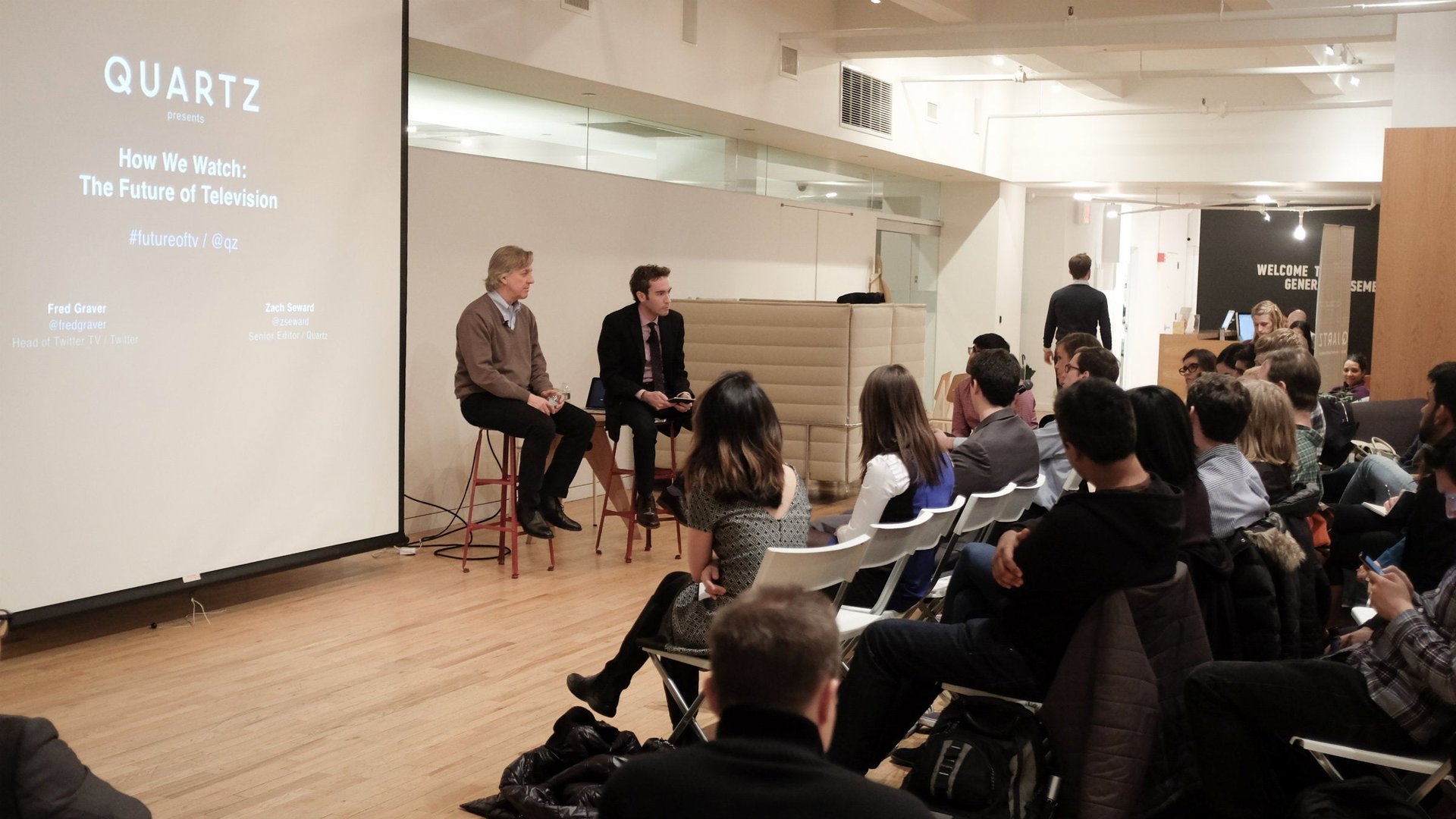Twitter’s dream for TV: You will never watch alone
Twitter’s head of television, Fred Graver, admits that his sister is completely baffled by the social network. “She still doesn’t get why you would open up Twitter and watch a TV show,” he told a packed audience at Quartz’s event on the future of television in New York on Tuesday (March 18). And that’s perhaps the biggest challenge facing the social network: how to attract and retain new users who often find Twitter and its customs too confusing.


Twitter’s head of television, Fred Graver, admits that his sister is completely baffled by the social network. “She still doesn’t get why you would open up Twitter and watch a TV show,” he told a packed audience at Quartz’s event on the future of television in New York on Tuesday (March 18). And that’s perhaps the biggest challenge facing the social network: how to attract and retain new users who often find Twitter and its customs too confusing.
It’s not difficult to understand why the company is making such a huge push into television—to cement its position as the dominant platform for real-time conversation, attract new users, and make money from them. Graver knows a bit about the medium, having formerly worked as a writer for shows like Cheers and the Late Show with David Letterman, and as a producer for the Jon Stewart Show. He describes his role at Twitter as to “get everyone in America to say ‘Oh my God watching TV with Twitter is so much better than watching TV alone.'”
Twitter’s engagement levels around TV are extremely high. Graver says that 95% of public conversations about TV happen on the platform, and that 33% of Twitter users tweet about the shows they watch. People generally only tweet once about a show—the average is actually 1.5 times per user because of the”loudmouths” who tweet to excess—and 70% of tweets happen within three hours of a show airing. The challenge is to convince the uninitiated to use the platform. ”It ain’t easy and we know it’s not easy and it’s something we have to work on,” Graver said, noting that up until very recently Twitter didn’t even have a marketing department. “It’s kind of like a grown-up step for a company but it’s a great grown-up step.”
Last month, Ellen DeGeneres’s Oscar’s “selfie” was retweeted more than 3 million times, a new record that showed how Twitter shines during live events. (Graver described them as “proof opportunities” for non-users). But increasingly, Americans and people from abroad are consuming their television on their schedule, instead of a network’s, which Twitter sees as an opportunity to work with broadcasters to promote their shows.
Graver said it’s too early to determine whether the Netflix model of tailoring shows like House of Cards to binge-watchers will grow more popular. But he believes that ”the audience misses something in not being able to stop and talk about it,” and that such shows “don’t have the same storytelling power over the culture. “
When do Twitter and TV not mix? Graver highlighted the live Twitter feeds used in some news broadcasts to demonstrate a network’s understanding of social media as being like “Pavarotti sings the Beatles—not cool.”